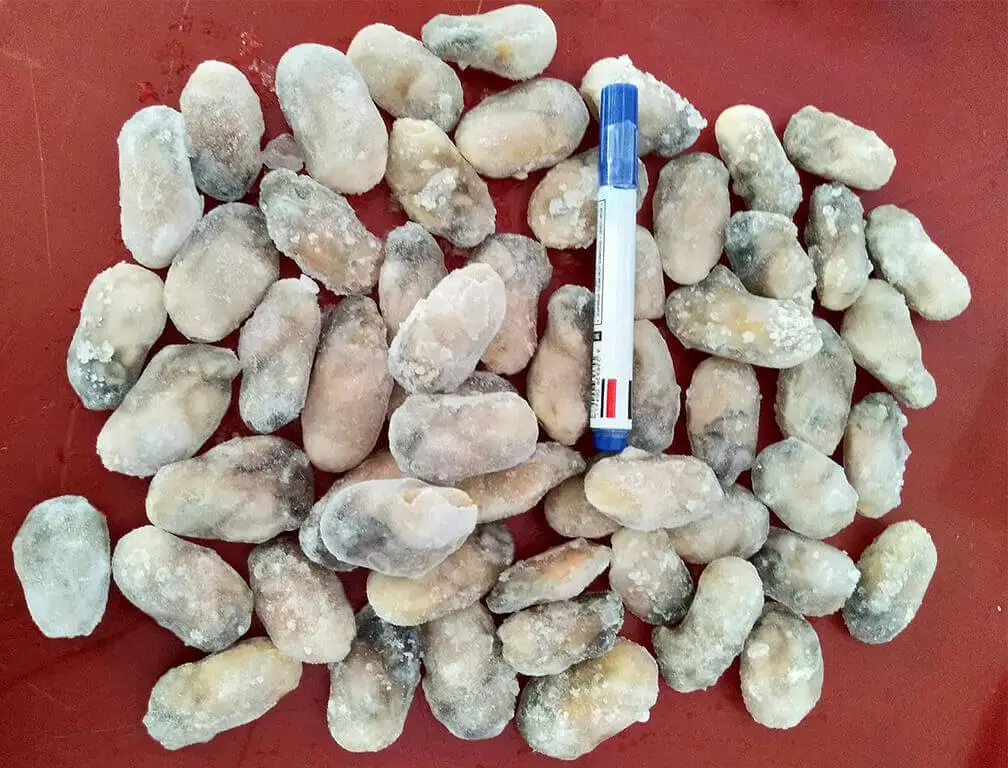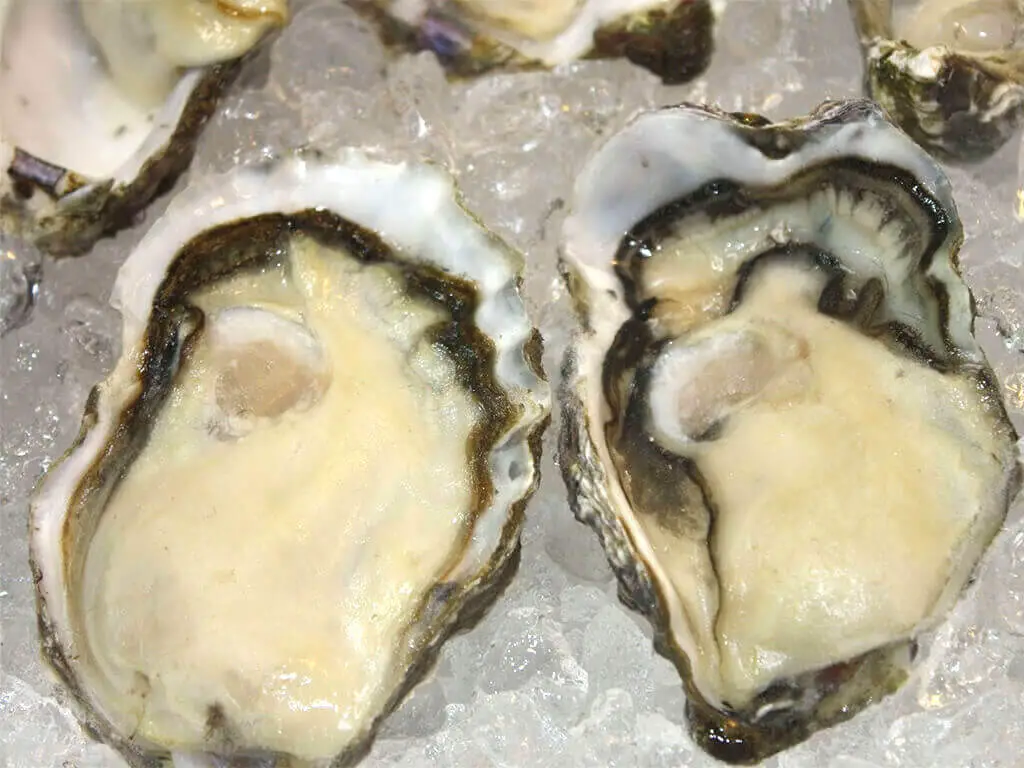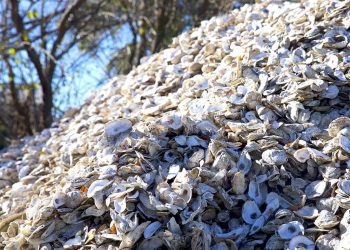Oysters are delicious and juicy seafood, a well-liked dish by millions of people around the world.
You can eat these creatures raw or prepare and cook them in different dishes such as soups, chowders, or stews.
After shucked or cooked, how long do oysters last in the fridge? It’s time to read this post to learn about the shelf life of this delicacy.
Let’s scroll down to discover!
Table of Contents
How Long Do Oysters Last in the Fridge?
When properly stored in the fridge, live oysters can be kept for up to two weeks; shucked oysters should last around a week; and cooked oysters can stay in good condition for up to four days.
In general, you should consume these shellfish within one week for the best taste and flavor. Food poisoning is a risk if you go beyond that range.
How Long Can Live Oysters Stay in the Fridge?
Unopened oysters are still alive, so you need to keep them cool and damp in a refrigerator with a temperature range of 35°F to 40°F. This way, they can survive for up to two weeks.
Before storing the live oysters, make sure to check for any dead ones. A dead oyster will not close its shell when tapped and should be discarded immediately.
How Long Are Fresh-Shucked Oysters Good for?
When appropriately stored in the fridge, the average shelf life of shucked oysters is up to seven days.
Before you refrigerate these oysters, ensure you clean and shuck them properly. Here are some tips to follow:
- Wrap the oyster in a towel. Hold the hinged end towards you while ensuring the cup faces downward.
- Insert the blade of a tiny knife into the oyster shell’s hinge.
- Twist the knife once it’s inside the oyster shell to open it.
- Slide the oyster knife down the interior of the upper cover to slice the abductor muscle of these creatures.
- Start cutting from the oyster’s base shell.
- Slide the blade below the oyster to separate the flesh from the cover.
After shucking the oyster meat, put it in a bowl with food wrap or a sealed container.
It’s best to store shucked oysters in colder conditions. Thus, if possible, keep your fridge between 34 and 35 °F.
This way, this seafood can last up to seven days before it shows signs of spoiled food.
If you want this meat to last longer, it’s a good idea to keep it in the freezer. It may be in good condition for up to three months.


How Long Can Cooked Oysters Stay in the Fridge?
After you cook oyster meat, you can place the leftovers in an airtight container and keep them in the fridge for up to four days.
Never place cooked oysters in a freezer since freezing can change and even destroy the flavor and texture of your food.
Can You Eat Oysters Raw?
The short answer is yes! Most people love eating oysters raw. While it’s a great experience, some may not want to serve this delicacy this way.
Oysters are your favorite, but you still find it questionable if it’s the first time you eat them raw.
According to oyster purists, eating alive oysters is the most fantastic method to enjoy this seafood. This way, you can savor the salty flavors combined with a gooey texture.
Although eating oysters raw is a unique experience, this serving method has recently been scrutinized due to potential risks.
According to research by the CDC, these creatures carry a deadly virus called Vibrio, which can cause food poisoning.
It’s dangerous since safety and freshness aren’t always guaranteed. Lemon or vinegar juice won’t be helpful in the fight against bacteria.
Moreover, before consuming raw oysters, you should ensure you are not allergic to this species.
Although they are less frequent than allergies to crustaceans, mollusk allergies may cause severe, even fatal, symptoms.
For these reasons, while it’s great to enjoy raw oysters sometimes, you shouldn’t serve this seafood that way to avoid unwanted issues like food poisoning.
You can also watch this video to get some guide to eating raw oysters properly:
How to Tell If Oysters Are Bad
Only cook and consume live oysters. It would be best to throw dead oysters away because they can contain dangerous bacteria that might make you sick.
Oysters are a special type of shellfish with a unique flavor. The method for determining if they are bad differs from other seafood.
The following indications are the most typical ways to recognize spoiled oysters:
- How long has your seafood sat at room temperature? If the duration is too long, don’t eat it, as bacteria start developing inside it.
- You should throw your oysters away if their texture is slimy, their smell is foul, and their color is unusual, with yellow or green spots.
- Look at the shell. If it’s open, the meat may have gone bad. It’s also a sign of a dead oyster since live mollusks have close covers if touched.
- When you open these shellfish, bad ones may release an unpleasant ammonia smell.
- When shucking these creatures, you won’t see the seawater and liquor, and the inside is not moist, meaning the seafood is spoiled.
- You can tap on the shell to check the closed oysters’ meat. If you hear a hollow sound, they’re dead. It’s time to discard them!
Can You Eat Bad Oysters?
No! After checking oysters and you detect some have gone bad, throwing them away is advisable.
As shared earlier, these shellfish carry Vibrio vulnificus, a life-threatening virus for humans.
If you eat bad oysters, these bacteria will go into your body. You may suffer fever, abrupt chills, nausea, shock, diarrhea, or skin lesions after eating them for 24-48 hours.
Oysters rarely cause food poisoning, but if it does, examine your health closely for at least three days, particularly if you already have underlying diseases.
Even if you have taken all necessary precautions to ensure the quality of the shellfish you’re consuming, a nasty oyster may end up in your mouth.
If you are unwell, the best course of action is to drink plenty of water to replenish the lost fluids during sickness and avoid dehydration.
After that, contact a medical clinic in your region, a doctor, or the nearest hospital. After 2-3 days, you will be fine.
However, involving specialists and calling for additional medical attention is crucial because certain seafood-borne food poisonings can be dangerous.
How to Store Oysters Properly In the Fridge
Depending on the condition of the oysters you have, the storage methods may be different. Consider the following tips for each type!
Live oysters
In-shell live oysters will last longer and have better freshness than shucked ones. Here are some storage guides for this category:
- Keep live, fresh oysters in the refrigerator for breathing. Because they require oxygen demand, never place live oysters in a sealed container.
- Don’t store these shellfish in freshwater since it may poison them over time.
- Lay these creatures on a baking sheet or tray with an even space.
- Use a damp cloth to cover them and put the tray in your fridge.
- Set the fridge temperature in the range of 35 and 40°F. The live oysters will enter inactive mode.
- This way, your seafood can last around two weeks.
Related: How to keep oysters alive
Shucked oysters
The best way to store this type is to place it in colder temperatures in your fridge. Follow these simple tips:
- Clean and shuck the oysters.
- Place these shellfish in airtight containers.
- Set the refrigerator between 34-35℉. This food can last up to one week.
Cooked oysters
If you don’t serve cooked seafood immediately, it’s best to keep it in your fridge to avoid food poisoning.
- Put cooked seafood in airtight containers.
- Place these containers in the fridge. It will stay good for four days.
- You can freeze cooked food to extend its shelf life (up to 3 months), but this storage method will change its flavor and texture.


FAQs
How Long Can You Leave Oysters in the Fridge After Buying Them?
This store-bought seafood can stay fresh in the fridge for up to one week if you store it properly.
Do Oysters Spoil Easily?
The bad news is yes! These shellfish are easily perishable. They will spoil quickly, especially in hotter months, if you don’t keep them in the fridge.
Can You Eat 5-Day-Old Oysters?
Yes! Whether it’s shucked or cooked oysters, you can consume them if you apply the correct storage method in the refrigerator.
However, checking your food before consumption is best to avoid unwanted health issues.
Can You Cook Bacteria Out of Oysters?
Cooking shellfish is an effective way to kill bacteria and viruses inside these creatures.
You must ensure the internal temperature to cook out most pathogens is 194 degrees Fahrenheit for at least 90 seconds.
Wrapping Up
How long do oysters last in the fridge? Live oysters can survive within two weeks, while shucked shellfish can remain in good condition for seven days. The shelf life of cooked seafood is shorter, not more than four days when refrigerated.
While eating this delicacy raw is the best way to enjoy its flavor and taste, don’t serve it very often as it may pose dangerous health risks.
If you have further questions, please comment below. We’re willing to reply to them all. Thanks for reading!
















Hello. impressive job. I did not anticipate this. This is a remarkable story. Thanks!
Thank you for your sharing. I am worried that I lack creative ideas. It is your article that makes me full of hope. Thank you. But, I have a question, can you help me?
Hi Neat post Theres an issue together with your web site in internet explorer may test this IE still is the marketplace chief and a good component of people will pass over your fantastic writing due to this problem.